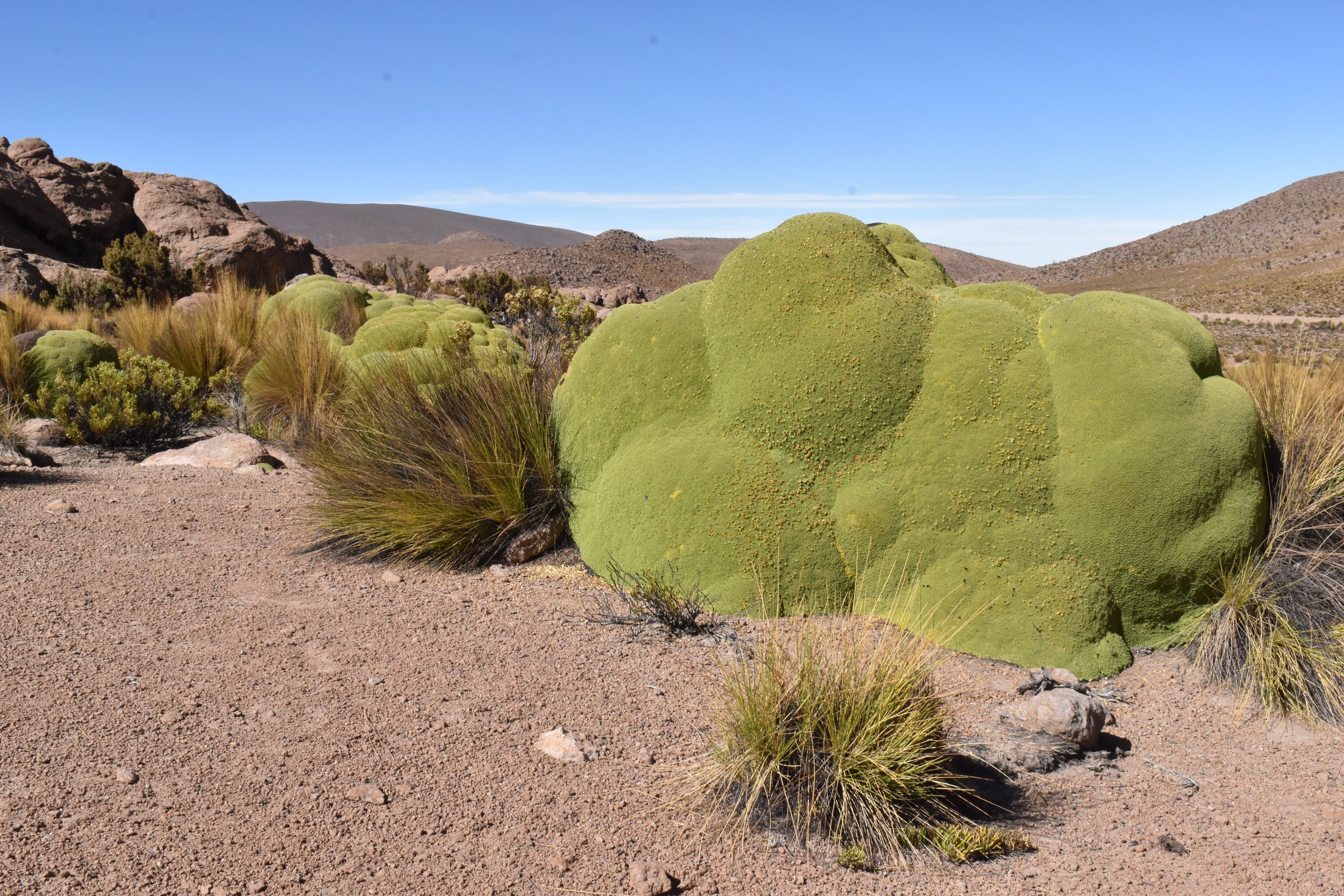The INCREDIBLE LLARETA : Azorella Compacta
The selection pressures of a high, dry environment such as that of the Andes of Northern Chile will shape the evolutionary trajectory of many plant species, and the way such selection pressures manifest is nowhere better represented than in the morphology of the long-lived, high-Andean “carrot” (family Apiaceae) Azorella compacta. It takes many adaptations to be able to grow in the high, dry Andes of Northern Chile - resistance to frost, dessication (drying out), as well as a way to deal with the raised intensity of ultraviolet light and exposure (the UV is stronger since there’s about 14,000’ worth of atmosphere LESS that ultraviolet waves must travel through to reach plants at this altitude versus plants at sea level.
This high Andean member of the carrot family - Azorella compacta - posses adaptations to each. Plants grow compact and matted, as do many other sympatric species at this elevation such as Pycnophyllum tetrastichum (Caryophyllaceae). Growing as a “carpet” helps a plant stay closer to the ground where temperatures are slightly warmer due to the ground being heated by the sun’s infrared, as well as staying out of the dry, dessicating winds.
Azorella compacta also has a thick cuticle - a waxy covering that prevents its tightly compacted leaf rosettes from transpiring too much moisture. Thick cuticular wax is a great benefit in a dry environment. This thick wax - as well as the resin (which smells like the notorious furanocoumarin chemistry of the carrot family) - also helps protect Azorella compacta, aka “llareta” from the high intensity UV rays at this elevation. Individual plants of this species are though to be able to live for upwards of a couple thousand years. And it makes sense given their high, dry habitat. Once a plant has mastered the art of growing in such an extreme environment, few other things - pestilent insects or disease are both negligible at this altitude - few things can harm it.


















